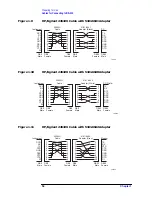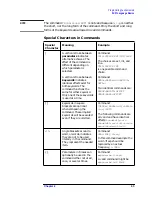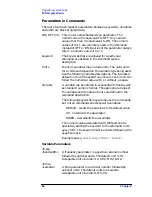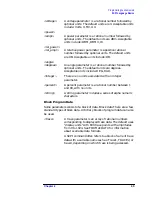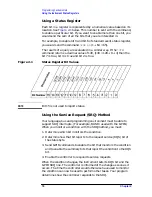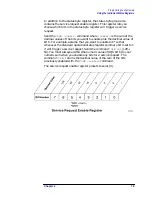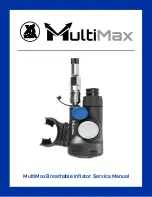
Chapter 2
65
Programming Fundamentals
SCPI Language Basics
<voltage>
A voltage parameter is a rational number followed by
optional units. The default units are V. Acceptable units
include: Volts, V, MV, UV.
<power>
<ampl>
A power parameter is a rational number followed by
optional units. The default units are dBm. Acceptable
units include: DBM, DBMV, W.
<rel_power>
<rel_ampl>
A relative power parameter is a positive rational
number followed by optional units. The default units
are dB. Acceptable units include: DB.
<angle>
<degrees>
An angle parameter is a rational number followed by
optional units. The default units are degrees.
Acceptable units include: DEG, RAD.
<integer>
There are no units associated with an integer
parameter.
<percent>
A percent parameter is a rational number between 1
and 99, with no units.
<string>
A string parameter includes a series of alpha numeric
characters.
Block Program Data
Some parameters consist of a block of data. Block data There are a few
standard types of block data. Arbitrary blocks of program data can also
be used.
<trace>
A trace parameter is an array of rational numbers
corresponding to displayed trace data. The default uses
“display units” with 600 trace points with amplitudes
from 0 to 1024. See FORMat:DATA for information
about available data formats.
A SCPI command often refers to a block of current trace
data with a variable name such as: Trace1, TRACE2, or
trace3, depending on which trace is being accessed.
Summary of Contents for E4406A VSA Series
Page 4: ...4 ...
Page 59: ...59 2 Programming Fundamentals ...
Page 124: ...124 Chapter2 Programming Fundamentals Using the LAN to Control the Analyzer ...
Page 125: ...125 3 Programming Examples ...
Page 164: ...164 Chapter3 Programming Examples Using Java Programming Over Socket LAN ...
Page 165: ...165 4 Programming Command Cross References ...
Page 379: ...379 6 Error Messages ...
Page 412: ...412 Chapter6 Error Messages Error Message Descriptions ...




